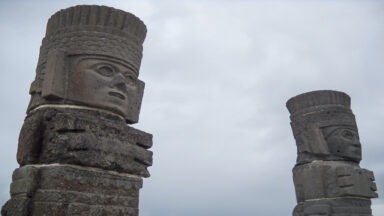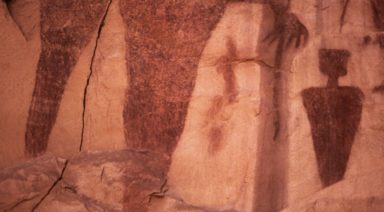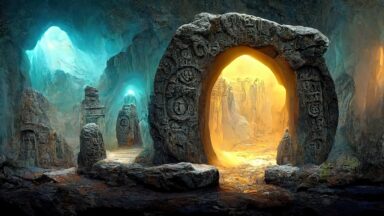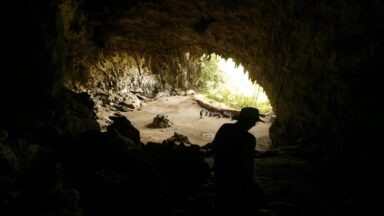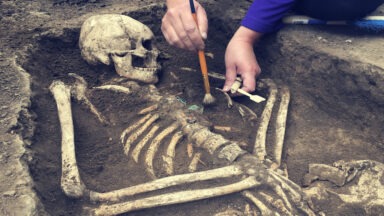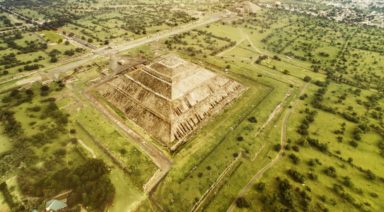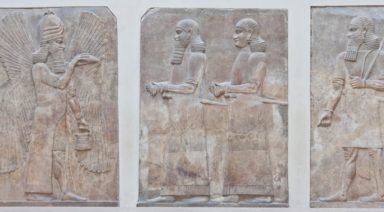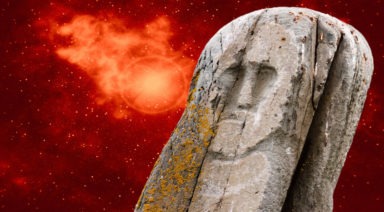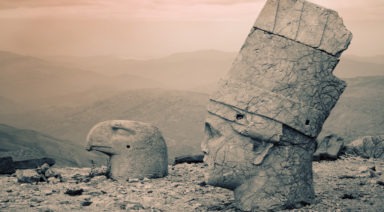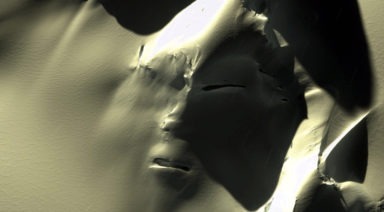The Mathematical Genius Encoded in the Great Pyramid
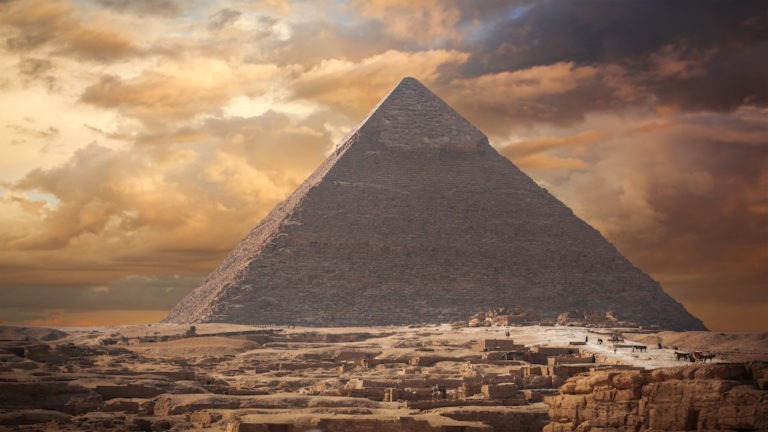
Across the shifting sands of time, nowhere has remained more mysterious than ancient Egypt. This desert beacon continues to allure millions due to its unsolved secrets, theories, and godlike pharaohs.
But perhaps the greatest reason for Egypt’s enduring popularity is a theory that places the age of this enigmatic land’s monuments so far back in history that Egyptology’s explanations seem untenable. This ultra-ancient origin has led many to surmise that the people who built these physical structures were capable of such an advanced level of engineering, in which they encoded the mathematical principles of life itself.
The architects of ancient Egypt’s monuments were far more purposeful in their proportions, measurements, angles, and equations than most modern-day archaeologists credit them with. There is also the distinct possibility that these architects found a way to naturally harness electricity from the Earth itself.
A Mathematical Code of the Universe?
While archaeologists have long been infatuated with the construction and grandeur of the Egyptian pyramids, the greatest mystery may have nothing to do with how these structures were precisely designed and crafted, but more about how they were potentially used as powerful devices to generate electrical power.
The Great Pyramid of Giza features both a shape and location designed to harbor mathematical constants. This same mathematical theory can be found throughout nature and across the universe.
Nikola Tesla, who sought to tap into the electromagnetic currents of the earth to bring the world unlimited electrical power, was in touch with these same mathematical underpinnings. Like the pyramid builders, Tesla realized Earth is a magnetic generator, spinning around two poles, with the potential to generate limitless energy.
In 1905, he filed a United States patent, titled “The art of transmitting electrical energy through the natural medium,” and conceptualized designs for a series of generators stationed in strategic sites worldwide that would collect energy from the ionosphere. With its two poles, Tesla saw the earth as a massive electrical generator of limitless energy and designed generators based on the pyramids’ design.
The Key to the Pyramids: Location?
Although Tesla may have rediscovered this key to a timeless, abundant, clean, and eternal source of free electricity, his invention to capture it disappeared when he died in 1943. Why this happened only opens more doors to speculation, including the fact that free energy — whether from solar, wind, or electromagnetic sources — is bad for those in the energy business.
What’s more astounding is the sophistication of mathematical equations used by the early architects to construct what may be an elaborate electrical generator.
In 2018, a team of scientists from ITMO University, Russia, began to study the Great Pyramid of Giza and its ability to concentrate electromagnetic energy in its internal chambers and under its base. Author Andrew Collins suggests the pyramids are related to the idea of “the music of the spheres,” a connection between the primal tones of the universe itself and their relationship to the creation of form and structure in the physical world.
To attune and enhance this connection, ancient engineers had to consider certain proportions in the construction of the pyramids, as well as the geometry of the landscape, to accurately reflect specific musical intervals. We are left wondering if ancient builders erected monuments that encoded our human existence.
Some modern thinkers have hinted at the possibility that perhaps the Egyptian mathematical code is the same as that which Tesla tapped into on his quest to find an unlimited source of energy that harmonized with the Earth.
Looking at the Great Pyramid’s latitudinal location on Earth, Hancock points out that it is located precisely on the 30th degree, halfway between the equator and the north pole. It is also locked into the planet’s true cardinal directions of north, south, east, and west, though there is a very slight discrepancy of 3/60ths of a degree error.
Hancock also points out that if you were to multiply the base perimeter of the Great pyramid (3,024 ft.) by 43,200 you get the Earth’s equatorial circumference. If you multiply its height (481 ft.) by 43,200 you’re left with the polar radius of the Earth. This number, 43,200, is relevant because it represents the axial precession of the Earth or the way in which it wobbles on its axis. 43,200 is a multiple of 72, which is the number of years it takes for one degree of that wobble.
These numbers, 72 and 432, can be found in a number of ancient mythologies and sacred texts, including:
- 72: the number of languages spoken at the tower of Babel
- 72: the number of names for God in Jewish Kabbalah
- 72: the number of temples at Angkor Wat
- 72: the number of degrees longitude between Angkor Wat and the Great Pyramid
- 432,000: the number of syllables in the Hindu Rig Veda
- 432 Hz: the harmonic frequency believed to be an optimal resonance for music
This suggests the ancient Egyptians — as well as others, such as the people of Angkor Wat, the Mayan megalopolis of the Americas, and builders of similar sites all over the planet — may have used a mathematical language we are just now rediscovering.
Our Mathematical Universe
To truly crack the code of the ancient pyramids, we may now need to look at the mathematical equations encoded in their architecture. The problem may very well be that we have been looking for answers “out there,” in the universe when the answer to our most pressing problems is inside us.
Hancock has long argued that the concept of the pyramids has to do with the transformation of human consciousness. Whatever else a pyramid is, he said, it is absolutely an instrument that works on human consciousness. The very construction of the pyramids, powerful and sturdy enough to stand the test of time, ensures that humanity always has the codes to the universe.
The Epic Showdown Between Atlantis and Lemuria

Since Plato first mentioned the existence of an ancient land that once served as the hub of a great civilization, people have been intrigued by Atlantis—an alleged civilization of advanced people who descended from the stars.
Through the centuries, researchers have not only been driven to find where Atlantis once existed, but also its connection to unseen forces, distant civilizations, and a seat of wisdom now buried beneath the ocean. Thanks to the memories of Matias De Stefano, an indigo child who remembers his past life in the Atlantean colony of Khem, we can take an even closer look at this lost civilization.
Matias reveals the real nature of Atlantis and its historical connection with the Mu people, a species whom he refers to as the Alithir. This civilization has also been referred to in history as the Lemurian civilization. Lemuria has been thought to be a lost continent of the Pacific that was once an exotic paradise. Lemuria is front and center in an epic confrontation with the ancient empire of Atlantis across the globe, having left a lingering impression upon our modern world, and even influencing the way we live today.
Approximately 50,000 years ago the Alithir, also called the Angels of the Sea, made their home in the Pacific, where billions of years ago, the moon crashed into the Earth, creating the massive crater. The crash opened a powerful portal on the planet and attracted otherworldly beings to settle on Earth.. That territory was within the area that triangulates Hawaii to the north, New Zealand to the west, and Easter Island to the east. From there, the Alithir settled four main portals in North America, South America, Australia, and Asia, where the four largest deserts on earth existed.
Matias says the main preoccupation of the Alithir was to work with our planet’s water to connect the vibrations of Earth and all beings as one consciousness. As more civilizations came through the portals, they set out to rule with different agendas. Early on, the Sirius people arrived to organize the Kundalini energy of the planet and raise the vibrations of all beings.


